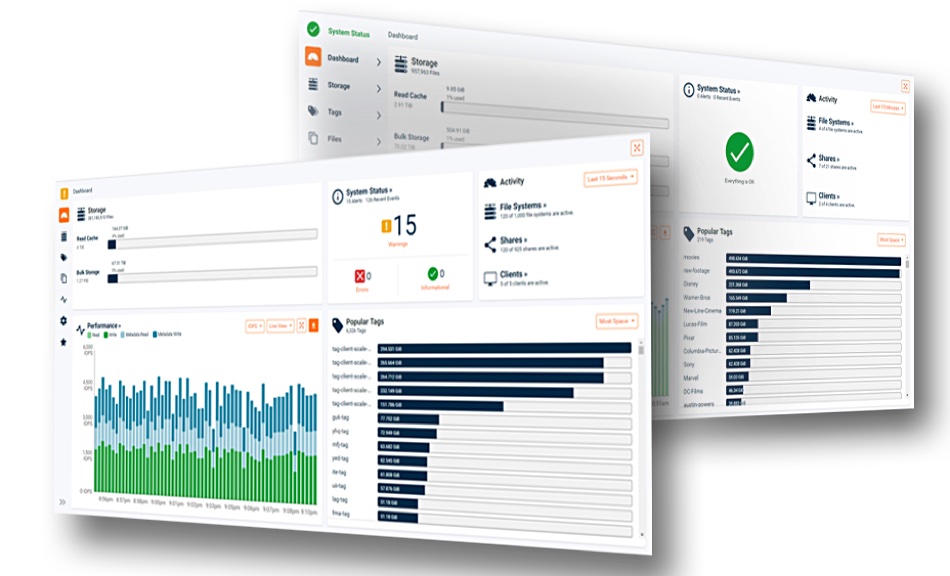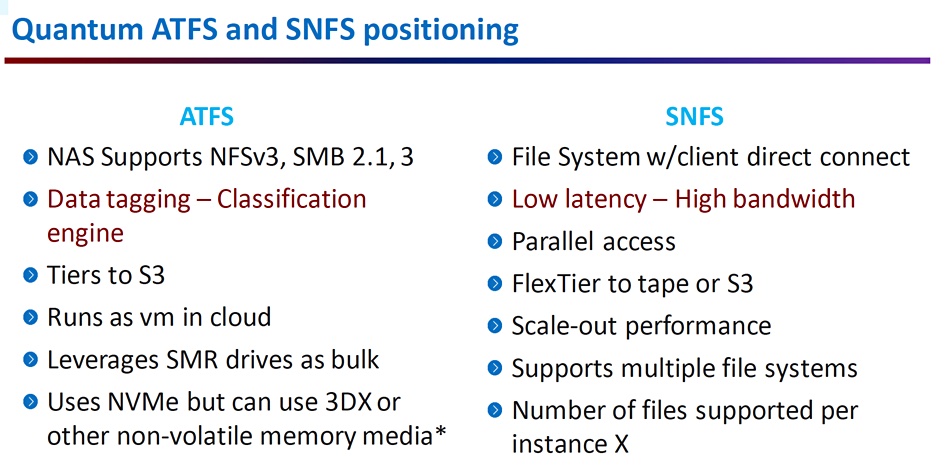Quantum has displayed the first fruits of its April 2020 acquisition of Atavium in April – a general file storage product called ATFS. The company has also updated StorNext and ActiveScale products.
ATFS (All-Terrain File System) is distinguished by its ability to improve file content searches using object-style metadata tags. Traditional file metadata is limited to name, folder, owner, type, size, data – basic categorisation that is little help in finding content. ATFS classification tagging can find wanted files faster and link files in new ways – for example, files of all types across an enterprise connected to a project.
Jamie Lerner, Quantum CEO, supplied a statement: “Our customers are dealing with massive video and unstructured data growth, and it will be the ability to harness the value of this data – to ‘enrich’ this data – that will drive businesses forward. This is what will drive the next discovery, the next innovation, new ways to communicate and entertain, and new business models.”
ATFS supports standard NFS and SMB file storage and API access. Its classification, run automatically when data is ingested, can drive file placement on storage tiers. Users may visualise data in virtual file system views for collaboration across users and organisations without creating duplicate copies nor loosening data security.

That means grouped files distributed across an organisation do not need to be collected in one physical storage place for overall processing.
ATFS can run as a VM in the cloud and move data to S3 as a tier. It supports two modes when using S3: native and managed. Native mode allows for applications to mount the S3 repository and use data in it for other workflows. In managed mode, ATFS can retrieve subsets of files, perform read ahead, and optimise data placement.
Files can also be moved between StorNext and ATFS where necessary.
StorNext and ActiveScale
StorNext 7.0 is equipped with new user interface, new API, new tiering engine with NVMe SSD, SSD, HDD, object storage, and tape tiers, and policy-driven file movement across these tiers. The NVMe SSD tier adds extra performance to the system.
StorNext can run as a virtual machine (VM) or in containers in the cloud or in Quantum-shipped hardware. Since it can run as a VM, using a host server’s storage, the server, or Quantum appliance, can run other VMs and so function as a hyper-converged system.
ActiveScale, Western Digital’s object-based archival storage system, was bought by Quantum in February. It represents an object storage tier for both StorNext and ATFS.
A Quantum diagram positions ATFS and the StorNext File System (SNFS);

The ActiveScale line gets a smaller capacity three-node object storage system, small object aggregation, and object lock to protect critical data. Object Lock renders objects immutable for defined retention periods. Object aggregation groups small objects into a single larger one to make writing more efficient and increase capacity utilisation.
ATFS, StorNext and ActiveScale are available on subscriptions on a per TB basis.
Comment
Quantum’s move into general file storage is a significant departure from its data protection to tape legacy and current StorNext video file management focus.
The Atavium acquisition represents a potential growth opportunity. In a way it is similar to StorNext in that file data is moved between storage tiers to balance the need for fast access from necessarily costly storage to long-term archival on the lowest-cost storage and intervening access tiers. What’s new with ATFS is the way that files can be identified for movement so that overall file storage costs are lower and file workflows are made easier.There is an ATFS datasheet which can provide additional information.








